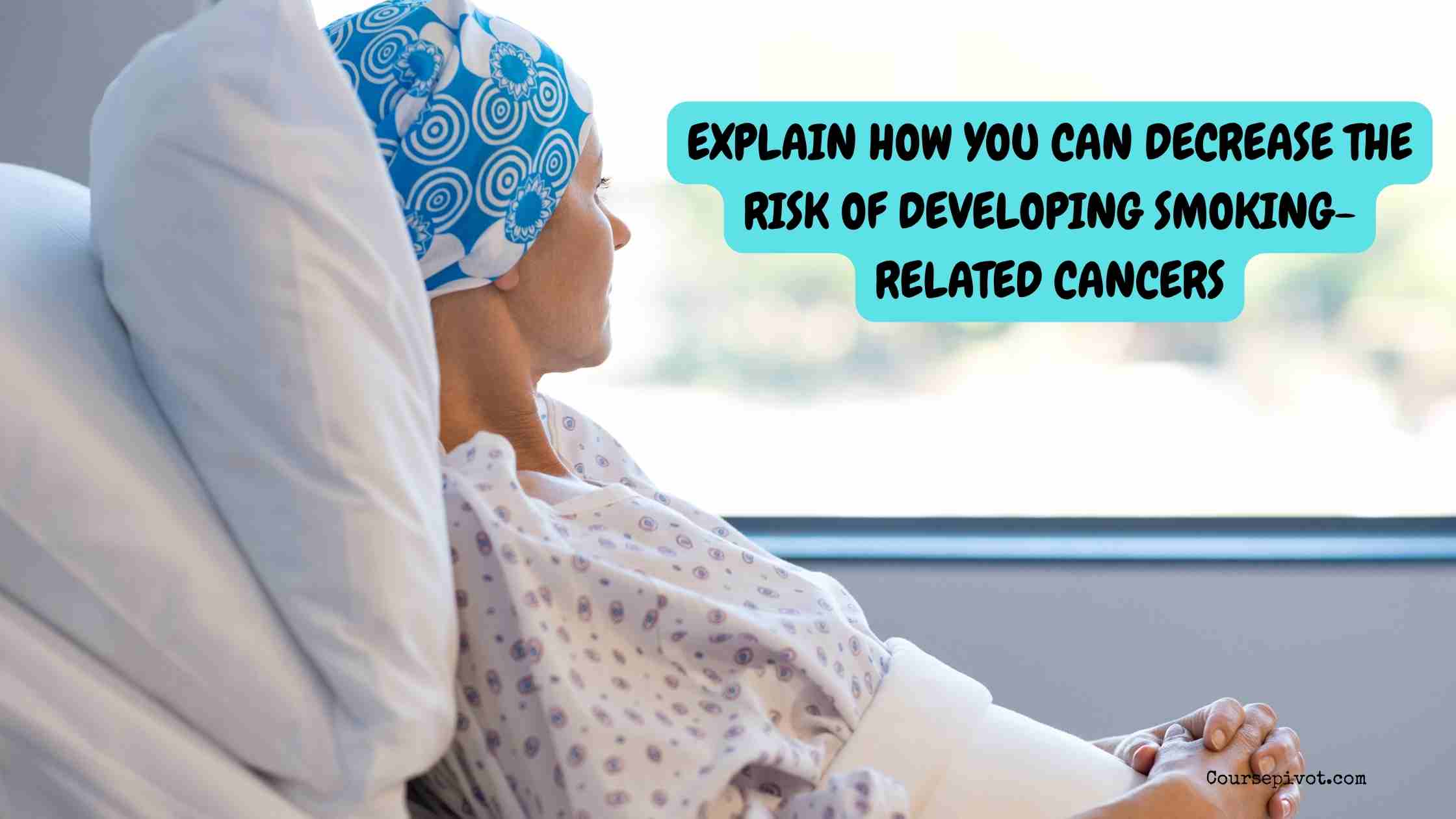
How to Decrease the Risk of Developing Smoking-Related Cancers
Smoking is a leading cause of cancers, including lung, throat, and mouth cancers, but taking proactive steps can significantly lower your risk. I’ve been struck by how lifestyle changes and early interventions can make a difference, even for those exposed to tobacco. Understanding how you can decrease the risk of developing smoking-related cancers empowers you to protect your health. In this article, I’ll explain five key strategies to reduce this risk, based on my research and insights into public health as of May 2025. These steps offer practical ways to safeguard your future. Let’s dive into how to prevent smoking-related cancers and why it matters.
Table of Contents
Ever wondered how to shield yourself from smoking’s deadly effects? Small changes can save lives. Ready to explore five strategies to lower your cancer risk?
Smoking’s toll is heavy, but preventable. I’ve seen how quitting and healthy habits transform outcomes. Let’s uncover how to reduce smoking-related cancer risk.
1. Quit Smoking Completely
Stopping smoking is the most effective way to lower your cancer risk, as it halts exposure to carcinogens. This is the top strategy to prevent smoking-related cancers. I’ve read inspiring stories of people who quit and saw their health improve.
- Impact. Quitting reduces lung cancer risk by 50% after 10 years, per CDC 2024.
- Tools. Nicotine patches, counseling, or apps like QuitNow help 20% of users succeed, per NIH 2025.
- Immediate benefits. Within weeks, lung function improves, cutting carcinogen buildup.
Why it works? Eliminating tobacco stops DNA damage that leads to cancer.
Read our blog on How Advances in DNA Technology Are Assisting the Medical Field
2. Avoid Secondhand Smoke
Exposure to secondhand smoke increases cancer risk, even for non-smokers, making avoidance crucial. This way to reduce risk protects you from hidden dangers. I’ve noticed how smoke lingers in public spaces, affecting everyone.
- Risks. Secondhand smoke causes 7,300 lung cancer deaths yearly in the U.S., per CDC 2024.
- Actions. Stay away from smoky areas, advocate for smoke-free zones, and use air purifiers at home.
- Impact. Avoiding exposure cuts cancer risk by 25% for non-smokers, per WHO 2025.
Why it matters? Secondhand smoke delivers the same carcinogens as direct smoking.
3. Adopt a Healthy Diet and Lifestyle
Eating nutrient-rich foods and staying active strengthens your body’s defenses against cancer. This strategy to lower cancer risk supports overall health. I’ve seen how diet changes boost resilience in former smokers.
- Diet. Fruits and vegetables, high in antioxidants, reduce lung cancer risk by 15%, per 2024 NCI studies.
- Exercise. 150 minutes of weekly activity lowers cancer risk by 10%, per ACS 2025.
- Weight management. Obesity increases cancer risk; maintaining a healthy BMI helps, per CDC.
Why it helps? A strong body repairs damage and fights carcinogens better.
4. Get Regular Cancer Screenings
Early detection through screenings can catch precancerous changes or cancer at treatable stages. This preventive measure is vital for at-risk individuals. I’ve learned how screenings save lives by acting fast.
- Examples. Low-dose CT scans for lung cancer detect 80% of cases early, per NIH 2025.
- Who needs it? Former smokers or those over 50 with a smoking history should screen annually, per ACS.
- Impact. Early treatment increases 5-year survival rates by 60%, per CDC 2024.
Why it’s key? Catching issues early prevents cancer from spreading.
5. Limit Alcohol and Other Risk Factors
Reducing alcohol and avoiding other carcinogens like asbestos or radon amplifies your protection. This way to decrease cancer risk addresses compounding factors. I’ve been surprised by how alcohol worsens smoking’s effects.
- Alcohol link. Heavy drinking with smoking raises oral cancer risk 5x, per NCI 2024.
- Other factors. Radon exposure, common in 1 in 15 U.S. homes, doubles lung cancer risk, per EPA 2025.
- Actions. Limit alcohol to 1 drink daily, test homes for radon, and avoid workplace hazards.
Why it matters? Minimizing additional risks lowers the overall cancer burden.
Read our blog on How Choosing Not to Smoke Can Be Beneficial to an Individual’s Health
What’s Next for You
Learning how you can decrease the risk of developing smoking-related cancers is like arming yourself with tools for a healthier life. I’ve been inspired by how these five strategies—quitting smoking, avoiding secondhand smoke, healthy living, regular screenings, and limiting other risks—can slash your cancer odds. With smoking linked to 30% of U.S. cancer deaths in 2024, per CDC, the stakes are high. Ignoring these steps risks your health; embracing them builds a brighter future. Will you keep smoking’s risks alive, or take action to prevent cancer?
Here’s how to start:
- Quit today. Call 1-800-QUIT-NOW or explore cessation programs.
- Get screened. Ask your doctor about lung cancer screenings if at risk.
- Live healthier. Add one fruit or veggie daily and walk 20 minutes.
Your health is in your hands. Why it matters is about living longer and stronger. Start today to reduce your risk and thrive.
Cite this article
You can copy and paste your preferred citation format below.
Martin, L. & Arquette, E.. (2025, May 31). How to Decrease the Risk of Developing Smoking-Related Cancers. Coursepivot.com. https://coursepivot.com/blog/explain-how-you-can-decrease-the-risk-of-developing-smoking-related-cancers/



